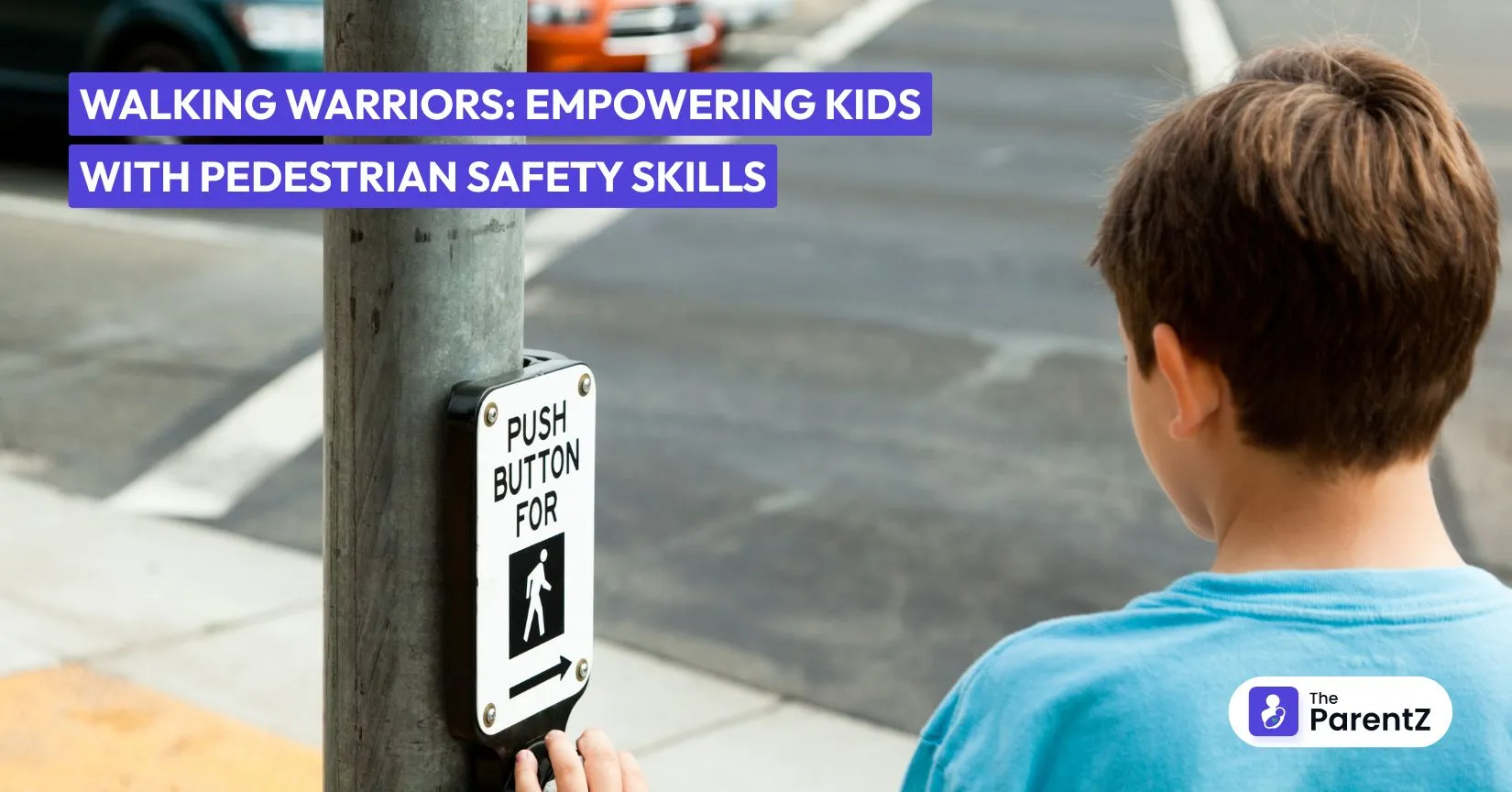Picture this: a curious toddler spots a colorful balloon across the street and takes off running without a second thought. Or a teenager walks home from school, earbuds in, eyes glued to their phone, completely unaware of the car backing out of a driveway ahead. These scenarios happen every day, and they highlight why pedestrian safety education is absolutely critical for children of all ages.
Why This Matters More Than Ever
With everyone glued to phones (yes, even kids), distracted driving at an all-time high, and electric cars that are practically silent, our streets are trickier than ever. Kids need to be walking warriors, i.e, alert, smart, and ready for anything.
Toddlers (2-4 years): The Hand-Holders
At this age, it's all about one golden rule: always hold hands. Period. No exceptions.
What to teach them:
- Stop at every curb like it's a red light
- Look both ways (even if they can't really judge distance yet)
- Never, ever run into the street; not for a ball, toy, or anything
The reality check: Toddlers have zero impulse control. They see something interesting and bolt. Parents and caregivers should always assume they'll do the unexpected.
Elementary Kids (5-10 years): The Rule Learners
This is when kids start walking to school or playing outside more independently. Time to level up their skills.
Essential skills they need:
- The Stop, Look, Listen drill: Stop at the curb, look left-right-left, listen for engines
- Use crosswalks and signals: Teach them that painted lines and walking signals are their best friends
- Make eye contact with drivers: If they can't see the driver's eyes, the driver probably can't see them
- Stay visible: Bright colors during the day, reflective gear when it's getting dark
Common dangerous stunts kids do:
- Darting between parked cars (drivers can't see them coming)
- Racing across streets to beat cars
- Walking while staring at phones or tablets
- Playing games like tag near roads
Tweens and Teens (11+ years): The Independent Walkers
Older kids think they're invincible. Spoiler alert: they're not.
Advanced safety skills:
- Ditch the distractions: No phones, earbuds, or games while crossing streets
- Trust your gut: If something feels off about a situation, find another route
- Be extra careful in parking lots: Cars backing out can't always see you
- Know what to do if you're hit: Stay calm, call 911, don't move unless you're in immediate danger
The Phone Problem
Kids walking while texting or with earbuds in both ears? That's like walking blindfolded. Teach them:
- Put the phone away when crossing streets
- Use only one earbud if they must listen to music
- Stop walking if they need to text or call someone
Handling the Worst-Case Scenarios
If a child gets hit by a car:
- Don't panic (easier said than done)
- Call 911 immediately
- Don't move them unless there's immediate danger
- Get the driver's information and license plate
- Take photos if possible
If a stranger approaches:
- Run to the nearest safe place (store, school, home)
- Yell loudly to attract attention
- Never get close to cars, even if someone asks for directions
Daily Carelessness That Drives Parents Crazy
Everyone has seen kids do these things that make hearts stop:
- Chasing balls into the streets
- Walking on the wrong side of the road
- Ignoring "Don't Walk" signals because "no cars are coming"
- Walking in groups and not paying attention because they're chatting
The Never-Do List
- Never assume drivers see you
- Never trust that cars will stop, even at crosswalks
- Never take shortcuts through alleys or between buildings
- Never walk alone in poorly lit areas
- Never ignore your instincts if something feels wrong
Making It Stick
Kids learn by doing, not just by listening to lectures. Practicing with them is essential. Walking to school together and pointing out dangers helps. Making it a game works too. "What do you see that could be dangerous for pedestrians?"
Creating family rules that everyone, including adults, follows is crucial. If parents are constantly jaywalking or walking while texting, children will copy that behavior.
Conclusion
Every child develops differently, but by middle school, they should be able to navigate streets safely on their own. Until then, it's everyone's job to teach them, practice with them, and gradually give them more independence as they prove they can handle it.
Remember, the goal isn't to scare children - it's giving them superpowers. The power to stay safe, make smart choices, and get where they're going in one piece. That's what real walking warriors do.








Be the first one to comment on this story.